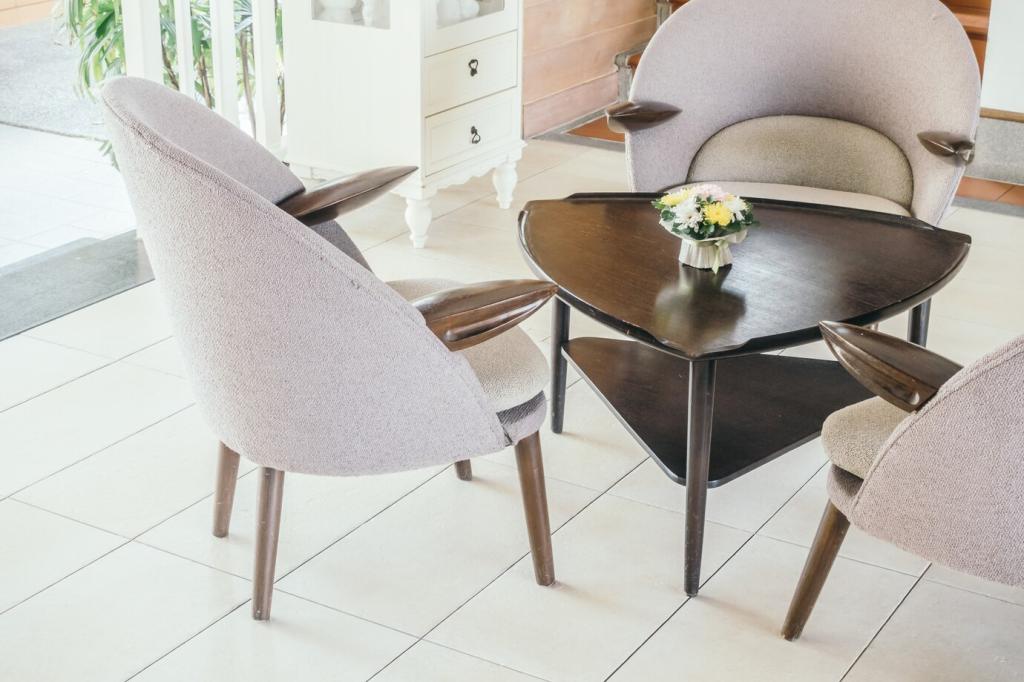
The Role of Upholstery in Ancient Furniture Styles
Today’s chosen theme is “The Role of Upholstery in Ancient Furniture Styles.” Journey through early civilizations to uncover how cushions, textiles, and stuffing shaped comfort, status, and aesthetics—and share your thoughts or questions as we rediscover the soft power behind hard seats.
Comfort and Prestige: Why Upholstery Mattered in Antiquity
01
Softness as Social Signal
In elite banqueting rooms, layered cushions broadcast wealth and hospitality. The more yielding the seat, the more elevated the host appeared. Tell us which ancient setting you imagine most inviting—and why upholstery would seal the impression.
02
Comfort as Cultural Technology
Beyond luxury, padded seating functioned as technology for rest, posture, and heat. Textiles insulated against cold stone, while layered stuffing adapted to the body, foreshadowing ergonomic ideas still shaping design today.
03
Ceremony and Display
From throne platforms to ritual couches, upholstery heightened ceremony through color, sheen, and tactile richness. Subscribe for future deep dives into how soft surfaces served as backdrops for power, prayer, and performance across empires.
Foundations: Webbing and Lashings
Under the visible fabric, craftsmen stretched linen tapes or leather thongs across frames in tight lattices. This breathable foundation distributed weight, reduced creaking, and allowed cushions to flex instead of collapsing into wooden voids.
Stuffing: From Plant Fibers to Animal Hair
Cushions were filled with wool, reeds, straw, or horsehair, each with distinct spring and durability. Horsehair resisted matting, while reeds offered light buoyancy. Comment with any modern equivalents you’ve tried that echo these ancient qualities.
Surfaces: Covers, Seams, and Finishes
Linen and wool predominated, with dyed borders, tablet-woven trims, and sometimes leather covers for hard wear. Tight seams and overlapped hems minimized fray, preserving edges as users slipped, reclined, and chatted late into the evening.
Across Civilizations: Egypt, Greece, Rome, and the Near East

Egyptian stools and beds often featured taut linen webbing and cushions, prized for coolness in desert heat. Tomb scenes show patterned textiles implying hierarchy. Imagine the crisp feel of fresh linen after Nile breezes—would you lounge, work, or dream?



Evidence and Preservation: Reading What Rarely Survives
Archaeology’s Subtle Clues
We rely on charred imprints, mineralized fibers, and tool marks on frames to reconstruct webbing and stuffing. Wall paintings, mosaics, and reliefs add context—each image a breadcrumb trail leading back to vanished softness.
Conservation Insights
Conservators study stitching holes, tack patterns, and wear on seat rails to infer fabric tension and thickness. Even rusted fasteners can indicate where borders were turned, pleated, or reinforced for daily sliding and reclining.
Imagining Responsibly
Reconstruction demands humility. We propose likely materials by climate, trade, and technology. Tell us which evidence type you trust most—iconography, residues, or comparative ethnography—and why it persuades you.
Makers and Markets: Workshops, Trade, and Skill
Artisans at the Interface
Joiners built frames; textile workers wove webbing and covers; leatherworkers finished edges and straps. The upholsterer coordinated these talents, a quiet conductor turning raw material into social comfort and ceremonial presence.
Trade Routes and Material Choice
Silks, fine wools, and rare dyes moved along caravan roads and sea lanes. Access shaped choices: coastal elites flaunted saturated hues, while inland homes prized durable local fibers tuned to climate and use.
Tools of the Ancient Trade
Awls, bone needles, shears, and simple frames enabled tight webbing and controlled tension. Share your favorite historical tool—real or reconstructed—and how you imagine it felt to cinch a perfectly even seat lattice.

Breathable Foundations
Consider webbing and natural stuffing for temperature regulation and long-term resilience. These ancient strategies can outlast foam while offering springy comfort and easy maintenance in contemporary homes.

Repair Culture and Modularity
Replaceable covers and layered cushions made ancient seating adaptable. Embrace slipcovers, tied pads, and stitched borders to extend life cycles. Subscribe for tutorials translating antique methods into modern projects.

Meaningful Color and Texture
Choose palettes and trims with story—earth dyes, woven borders, tactile surfaces. Then tell us how you’d reinterpret a Roman triclinium or Egyptian bed in your space, honoring history while living comfortably now.
